In an increasingly urbanised world, there is a growing disconnect between the people who live in cities and the natural environment. Urbanites tend to have less contact with natural habitats and biodiversity than their country or rural counterparts, and in some cases have been known to develop a disinterest or distaste for natural settings. This “Nature-Deficit Disorder”, as described by Richard Louv in his 2005 book Last Child in the Woods, is hypothesised to contribute to a range of behavioural problems, particularly in children. While Singapore is often considered to exemplify urban greenery, it is undeniably an urban city where this disconnect is manifested in much of the population. Most citizens are hard-pressed to identify even the most common of bird species, and it is not unusual to hear a child refer to the outdoors as ‘dirty’.
Singapore is a society in which nature conservation is not part of the public psyche, and much has to be done to improve general awareness of, as well as to encourage participation and stewardship in, nature conservation. While a large majority of Singaporeans recognise the value of nature, less than half is keen in participating in nature conservation efforts. The National Biodiversity Centre of the National Parks Board has developed a Community in Nature (CIN) initiative as part of a national strategy to conserve Singapore’s natural heritage. This initiative aims to synergise and coordinate all nature-related events, activities, and programmes to better reach out to the community to encourage them to bond over and with nature. To cater to the various needs of different segments of the community, CIN programmes are currently tailored to target schools, families, and citizen scientists.
Schools
As educational institutions, schools are natural targets to increase awareness of biodiversity and environmental education. As ecology and environmental education is scarce in the Singapore curriculum, enrichment programmes provide an alternative avenue for students to learn about our biodiversity. While such programmes have been around for a long time, newer programmes have made use of recent developments in pedagogy and technology to enhance the learning experience.
Greening Schools for Biodiversity
The Greening Schools for Biodiversity programme was initiated in 2014 to encourage student participation in caring for their school grounds and the environment. Open to students between the ages of 10 to 18, the programme promotes the targeted planting of bird-, butterfly-, and/or dragonfly-attracting plants guided by results from student-led biodiversity audits. Through this programme, not only are habitats created for animals, bringing the entire school population closer to nature, the resultant green network of schools also has the potential to act as link-ways for wildlife movement between nature areas across the whole of Singapore. Participants of the programme are also encouraged to learn about, appreciate, and support local biodiversity.
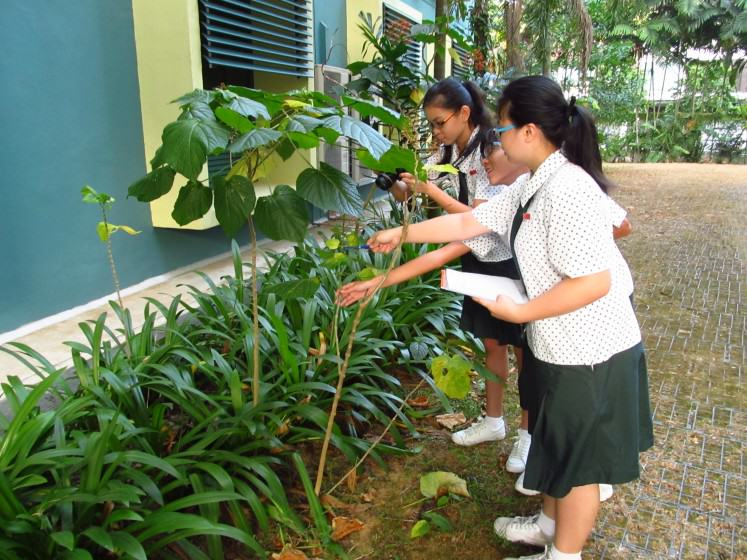
The training programme equips students with the skills to enhance biodiversity on their school grounds. Over the course of the programme, students learn to use Google Earth to create vegetation maps and conduct land-use surveys. Subsequently, students learn to survey the flora and fauna in their school during the biodiversity audit, where they gain hands-on experience in conducting wildlife surveys while honing their observational skills. Guided by information collected from the first biodiversity audit, students identify potential green areas to plant by evaluating the site conditions around the school. They also brainstorm outreach ideas aimed to increase appreciation and raise awareness of biodiversity in their school among their peers, teachers, and beyond. Finally, as outlined in their action plan, students carry out targeted planting in their selected plots, creating new biodiversity-friendly habitats on their school grounds. Through these steps, they learn to be more aware of the biodiversity in their immediate surroundings, as well as the ecological linkages between species.
Biodiversity Week for Schools
Between 18 – 22 May, the inaugural Biodiversity Week for School 2015, was organised in observance of the International Day of Biological Diversity (IDB). Under this programme, schools could sign up for a suite of different activities, each targeted at different age groups, to celebrate our natural heritage and IDB. Here, we discuss in more detail the Green Wave initiative, the Playtime with Paddy the Flying Pulai workshop, and the All about our Trees e-learning module.
The Green Wave initiative is a worldwide biodiversity campaign that educates children and youths on the importance of protecting our natural environment. Students from around the world will plant locally important trees in their school compounds at 10 am on 22 May each year. This creates a figurative “green wave” that begins in the Far East before eventually rippling globally. This year, NParks continues to encourage schools to plant new trees within their school grounds as a way of participating in this event. In addition, existing schools are encouraged to perform mulching on their existing trees to promote their health. By participating in this symbolic international initiative, students recognise the far reaching impacts of their actions and are inspired to take the lead in conserving our natural heritage.
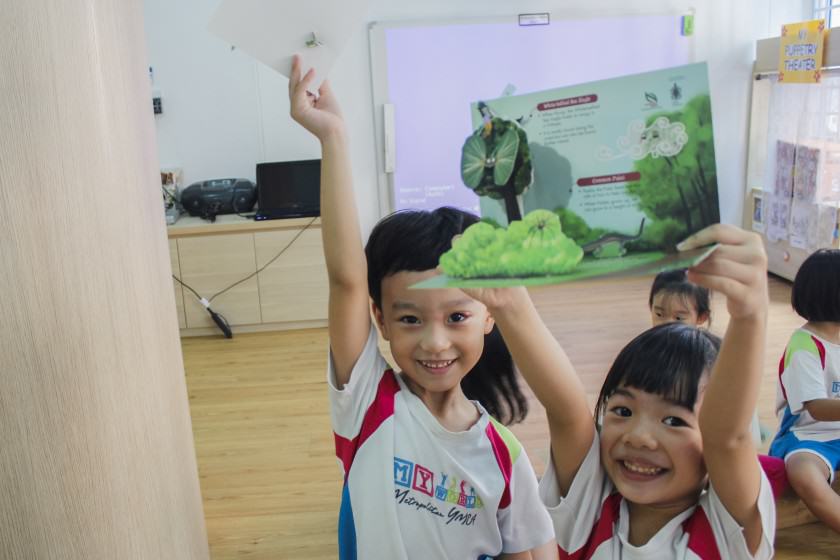
The Playtime with Paddy the Flying Pulai workshop was undertaken in collaboration with the Raffles Institution Ecological Literacy programme, which seeks to instill a sense of curiosity and exploration in their students to encourage environmental advocacy. Under this programme, students are encouraged to find ways to share their learning and insights with the community at large; most recently, this has taken the form of storybooks for younger learners. Due to the effectiveness of this medium in communicating environmental messages to young children, NParks has adapted the publication, Paddy the Flying Pulai, into a crafts workshop for preschool students to learn about some of the flora and fauna in Singapore’s forests. This workshop comes with an animated short following the adventures of Paddy the Flying Pulai and concludes with a folding craft activity where students assemble various characters to reconstruct the habitat depicted in the book.
The All about our Trees e-learning module makes use of information technology to communicate the importance of our trees to a new generation of IT-savvy youths. The e-learning module contains two short videos, A History of Trees in Singapore and Common Trees of Singapore, along with interactive quizzes to assess the student’s understanding of the module. Illustrated in the style of fast-motion whiteboard animation, which is popular on several educational channels on YouTube, this e-learning module carries an important message to youths in a medium with which they can identify. Many of these resources are created by student volunteers and young adults, who know best what captures the interest of their peers.
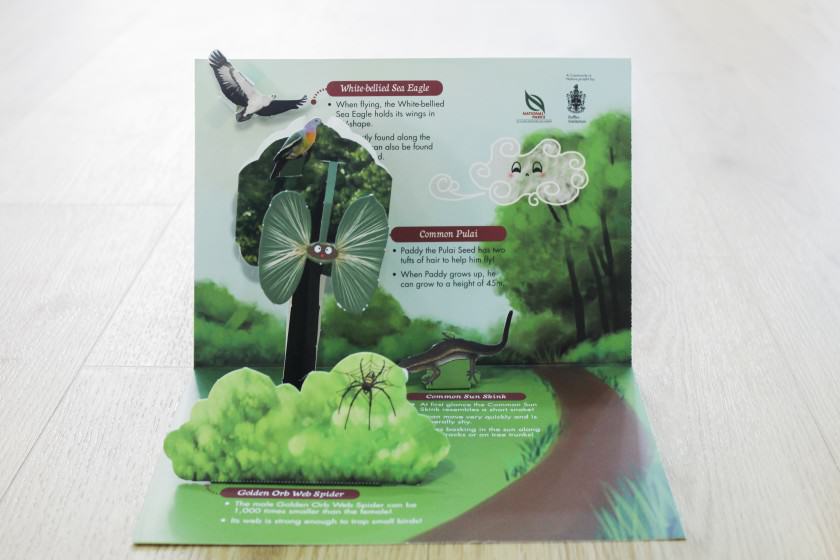
Families
Family groups have enormous potential for connecting and involving parents and children alike in the conservation of our natural heritage. Research into significant life experiences (SLEs) shows that early experiences in nature have a disproportionately large impact in shaping one’s interest in natural history. As families are always seeking meaningful and fun recreational activities to bond over, encouraging nature appreciation among families provides opportunities for parents to spend quality time with their children while inculcating nature ethics into their children at the same time.
My Family’s Nature Pledge is a programme which encourages families to experience nature and learn more about our biodiversity through exciting events and activities organised under the CIN initiative. Under this programme, nature appreciation is promoted as a healthy, social activity for the family to bond over. As part of the programme, families are invited to complete a series of 10 activities in our customised activity-poster and to submit a photograph of their completed work. These activities are carefully crafted to promote nature experiences and learning about our biodiversity in a fun, yet educational, way.
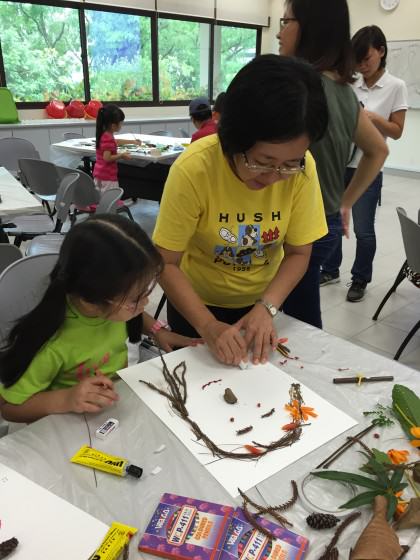
In addition to these activities, participants are invited to various workshops and guided walks. One recent workshop was the Art in Nature workshop, conducted in the Singapore Botanic Gardens. During the workshop, participants were led on a guided tour around the Gardens and invited to collect fallen plant materials to create their own nature collages. Through the workshop, parents and children alike learnt to appreciate the varied forms of plants around us. The session was extremely well received due to the interactive and creative nature of the activities.
Citizen science
With increasing education and awareness, we see a growing interest in volunteers to gain more knowledge or to make a more meaningful impact through their efforts. One way to enhance the volunteer experience is to participate in Citizen Science, a decades-old movement that has intensified in recent years. In Citizen Science: Public Participation in Environmental Research, Janis Dickinson and Rock Bonney define citizen science as ‘public participation in organised research efforts’. Recognising that the public has a significant role to play in research, scientists and academics have been harnessing the power of the people to collect large amounts of data. These citizen science programmes have the potential to achieve more than conventional outreach initiatives, as the crowd-sourced data can be used to inform management strategies and decision making.
NParks has rolled out several programmes aimed at the segment of society more geared towards such active participation. On 16 April 2015, NParks launched a 10-day long nationwide bird count that saw more than 400 volunteers conducting point counts at 60 parks and nature areas. Given the relatively small birding community and a lack of birding tradition in Singapore, a large proportion of the volunteers had little or no experience with bird watching. Volunteers were thus required to attend a training session to familiarise them with 30 common birds in Singapore that formed the baseline comparison across all sites. They were also trained with basic skills necessary to conduct a point count, and were tested in the field during the training sessions. This was to ensure that data collected by both amateur and experienced volunteers could be compared across all sites, if only for the selected bird species. This programme will subsequently be run twice a year to cover both the breeding season (in April) and the migratory season (in November).
One consideration of creating programmes for a relatively nascent nature community such as the one Singapore is the lack of knowledge and awareness prior to volunteering. It is thus crucial to ensure adequate training is provided, particularly for programmes where data needs to be collected rigorously. Another birding programme, Heron Watch, teams up experienced bird-watchers with new volunteers to survey designated transects for water birds such as herons, bitterns, and egrets. This transfer of knowledge ‘on the job’ is the model followed by many large-scale bird surveys elsewhere, and forms the foundation of many established birding communities.
CIN Citizen Science programmes are not limited to birds or to the terrestrial environment. TeamSeaGrass, is a collaboration between NParks and international Seagrass-Watch, the largest scientific, non-destructive seagrass assessment and monitoring program in the world. The team actively monitors three key seagrass meadows in Singapore, which provides the baseline data necessary to identify important trends relating to the health of the meadows. This small but dedicated group of volunteers have even presented their data at a local scientific symposium, proving that citizen scientists can yield useful and reliable information.
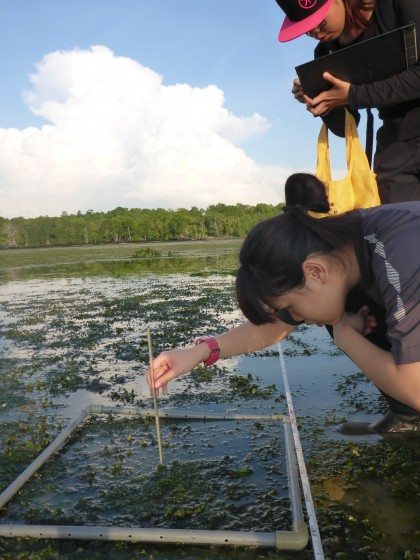
With the growth and proliferation of smartphones, there has been a growth in the number of mobile applications for citizen science purposes. CIN has tapped into this mode of crowd-sourced information by developing a new app to map the distribution of flora and fauna throughout the country. The SGBioAtlas app allows users to easily record and identify biodiversity sightings which contribute towards an existing online database (BIOME), which the public can use to analyse spatial trends or to search for the reported locations of specific species. Over time, this Atlas will become a database of biodiversity distribution that can be used as a management and research tool.
Festival of biodiversity
Inaugurated in 2012 by Singapore’s President Tony Tan Keng Yam, the Festival of Biodiversity is an annual signature CIN event organised by NParks in collaboration with the Biodiversity Roundtable (a group comprising local non-governmental organisations involved in local biodiversity issues) for the conservation of Singapore’s natural heritage. It is a national effort to communicate the importance of biodiversity and its conservation to Singaporeans and residents of Singapore.
The two-day educational event involved some 100 volunteers and 40 partners comprising nature groups, biodiversity experts, schools, corporate organisations, and government agencies, each contributing to the Festival’s programme and exhibits.
Through the Festival, the biodiversity community, public agencies, corporate groups, school groups, and individuals are galvanised to contribute to a common goal: the conservation of Singapore’s natural heritage. All the partners involved bring to the Festival their knowledge, expertise, and resources to create greater awareness and interest in our natural heritage and to instill a sense of national pride to sustain our rich biodiversity for future generations.
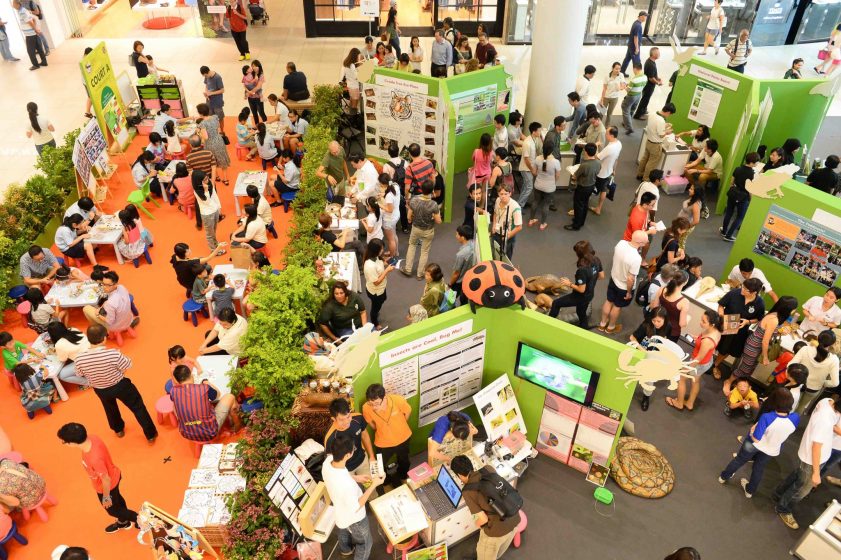
The first Festival, held in Singapore Botanic Gardens, attracted some 3,000 visitors; the second and third Festivals, which were held at a shopping mall, attracted at least 10,000 and 15,000 visitors respectively. Bringing biodiversity into the heart of a popular shopping mall also allows us to proactively reach out to the ‘unconverted’ passing shoppers, touching hearts and minds through the passionate volunteers showcasing a plethora of plant and animal specimens and sharing interesting nuggets of information about our biodiversity. Many young children were also given an opportunity to interact with biodiversity-related activities
Effects and Future Efforts
Even though CIN is still in its early stages, feedback to the programmes has been favorable. More data has to be collected to fully understand the impact of the CIN initiative, but responses on the ground have been encouraging. Many participants have expressed surprise at the amount of biodiversity that can be found in their surroundings and are keen to pursue nature activities in Singapore. By intensifying public awareness programmes and incorporating biodiversity into school curricula, we can enhance people’s appreciation of our native biodiversity and increase active participation in nature conservation activities. In the long run, CIN aims to cater to a wider audience with a greater variety of programming options, while also increasing presence in schools where education is most impactful. With time, we can begin to reconnect Singapore’s urbanites with their natural heritage, and safeguard it for generations to come.
Lena Chan, Linda Goh, Samantha Lai, and Zhou Boyi
Singapore
about the writer
Linda Goh
Linda Goh is the Deputy Director for Biodiversity Information and Policy Branch in the National Biodiversity Centre, National Parks Board, Singapore.
about the writer
Samantha Lai
Samantha is a biodiversity manager at the National Biodiversity Centre at the National Parks Board, Singapore.
about the writer
Boyi Zhou
Zhou Boyi is a manager at the National Biodiversity Centre, National Parks Board of Singapore.


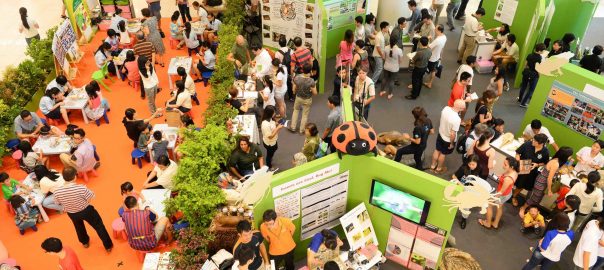
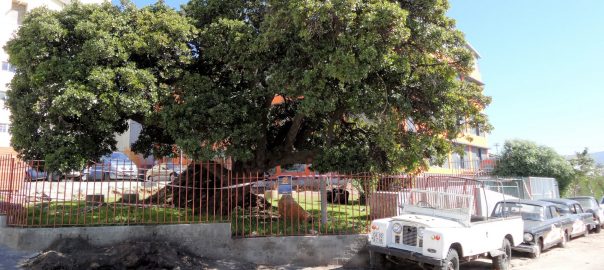

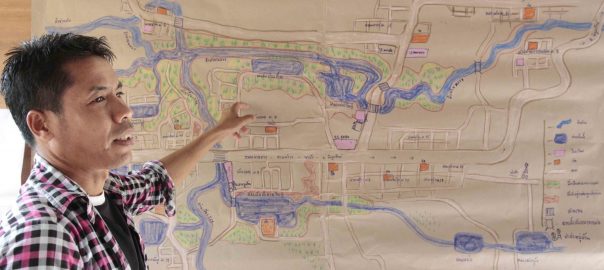
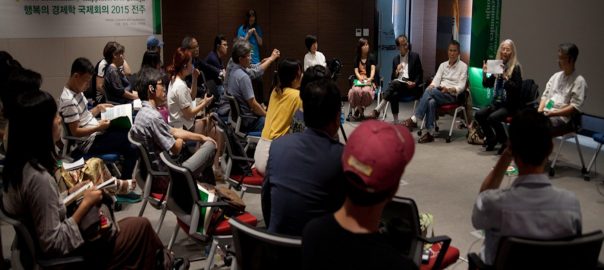
Leave a Reply